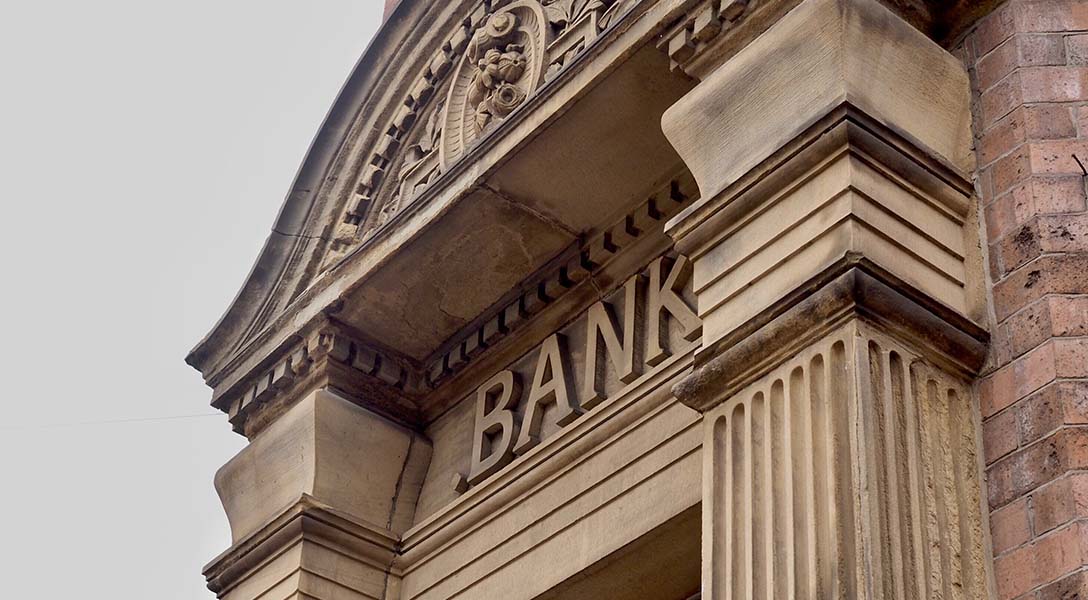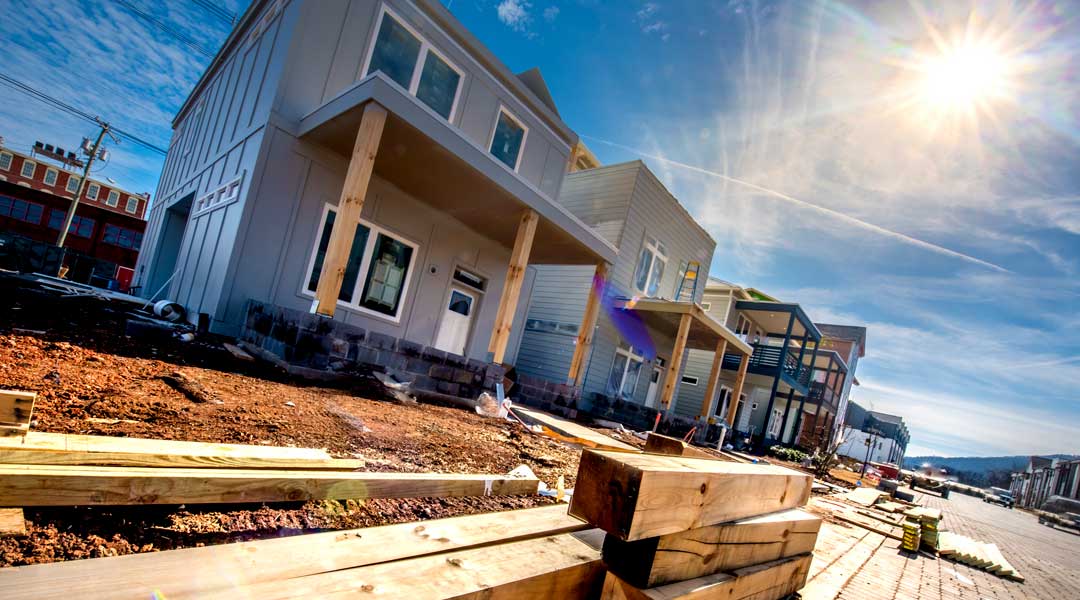
Bankers, regulators absorb lessons of Silicon Valley Bank failure as new tests emerge
Q. What’s your background and how has it helped in your work overseeing area financial institutions?
Before coming to the Dallas Fed, my research during seven years at Vanderbilt focused on how regulatory changes affected competition between banks and nonbank financial institutions. Before that, I worked at the Treasury and earned my PhD in finance at the University of Maryland. I’ve been basically trying to understand how banks’ business models are evolving since the 2008 financial crisis.
Q. How are banks in the region doing? What are their biggest challenges?
We have a lot of variety in the banks of our district. Many banks had a lot of deposit inflows during the pandemic, and they assumed that the deposits would be stable even when interest rates began rising in 2022. Some banks used those deposits to make long-dated investments in loans or securities, and now that interest rates have soared, those investments look like a bad call. When interest rates rise, the value of existing fixed-income assets fall.
There are also some banks—including some within our district—that were challenged by large deposit outflows during the turmoil around Silicon Valley Bank (SVB) (of Santa Clara, California, which failed in March 2023).
But a bigger challenge for banks in the Eleventh District (Texas, northern Louisiana and southern New Mexico) more recently is maintaining healthy net interest margins now that deposit liabilities are getting more expensive. This means that banks have to pay customers higher rates on their savings accounts to retain those deposits. Meanwhile, it takes banks a while to make loans and investments at the higher interest rates to compensate for the added costs.
Banks in our region are being proactive about their credit and liquidity risks, particularly by taking a hard look at commercial real estate commitments and by lining up multiple contingent sources of liquidity even if they don’t need them today.
These measures include signing up for Federal Home Loan Bank accounts or the Federal Reserve’s Bank Term Funding Program and signing up for discount window access. These banks don’t really need to borrow using these programs today, but they have set up the collateral agreements and paperwork so they are ready and able to access multiple contingent sources of cash in an emergency.
Q. It sounds like much of the pressure on our banks can be traced to the Fed rapidly raising short-term interest rates. Traditionally, higher rates have aided bank profitability; why not this time?
There is a kind of a split among our banks. After nearly 15 years of extraordinarily low interest rates, some banks believed the Fed would quickly stop raising rates and begin to lower them. They were not alone—you can see how the entire yield curve inverted steeply (with short-term interest rates exceeding those for longer-dated debt). The yield curve has remained inverted for 13 months now. Bond investors generally have believed that the period of high interest rates would be transitory.
At the same time, we have seen deposit betas significantly higher than in previous rate cycles. Deposit beta measures how responsive bank deposit rates are to the change in the federal funds rate (the Fed’s policy rate). Many banks have raised the rates they pay on deposits much faster than they expected.

It seems like technology and the rise of mobile banking may be driving this. When we looked across banks during the recent Fed tightening cycle, regardless of size, we found that banks with higher deposits per branch tend to have higher deposit betas.
In other words, banks that are getting by with fewer branches and gathering deposits over the internet are finding these deposits aren’t as sticky. Because the Eleventh District has many community banks that have kept their bank branches and strong customer relationships, their operations may actually be an advantage—they aren’t having to raise deposits rates as quickly.
Q. A few banks have not survived the tightening cycle that began in March 2022. After SVB failed, several other mid-sized, so-called regional banks collapsed. What happened at SVB?
There were many things that went wrong at SVB. I can try to summarize them; these views are my own and don’t necessarily reflect those of the Federal Reserve Bank of Dallas.
Basically, you had a bank that received a lot of deposits in the aftermath of the pandemic and—when they couldn’t make loans because customers didn’t need to borrow—they chose to invest those deposits in Treasury bonds.
Treasuries are a very safe investment, but they are not immune to changes in interest rates. Nevertheless, SVB management ignored their own internal warnings about the interest rate risk, and they seem to have hoped they could just keep financing these bond holdings with cheap deposits to earn their way out of the mess.
On the regulatory side, there were also complications. SVB had some explosive growth during the pandemic, going from around $71 billion in assets to over $200 billion before failing. When SVB grew above $100 billion, it crossed a supervisory threshold for examiners at the San Francisco Fed, which had overseen its operations.
From what we can see in the Barr Report [from Fed Vice Chair for Supervision Michael Barr, released April 28, 2023], it seems that there was a delay during that hand-off period between our Fed teams, and SVB was permitted to operate business-as-usual despite its known red flags.
When SVB failed, it had 31 open issues related to safety and soundness—called “matters requiring attention” or “matters requiring immediate attention”—and several of these were in areas of liquidity risk management and capital planning. However, the large majority of these were problems with governance and controls. Any matter requiring attention is a serious issue.
By March 2023, it was an open secret that SVB’s massive Treasury position was swallowing up its equity capital on a mark-to-market basis (recognizing the diminished value of its relatively low interest-paying bonds), but quarter on quarter, the losses actually seemed to be stabilizing.
When SVB released its 8-K filing with the Securities and Exchange Commission on March 8, it showed that the bank faced a second problem. All its tech startup customers, who had big deposit accounts after raising money from venture capital investors, were now drawing down those accounts to grow their businesses. This is the normal “cash burn” process of many startups, but investors were surprised by just how fast this money was being spent.
For SVB, it meant they had to switch [from the startups] to higher-cost deposits and short-term borrowings, meaning their interest expense was swallowing up the interest income on those long-dated Treasuries.
When SVB finally decided to start cutting its losses—selling its losing bond positions and issuing fresh equity capital—the market saw it as too little, too late. Investors realized that SVB had sold all the bonds it could without reaching into its hold-to-maturity bucket [of longer-dated Treasuries], and if SVB sold even a single bond from that pool, it would have to recognize all those additional losses, and equity would be completely wiped out.
Investors were not interested in buying new SVB stock at the price SVB was offering. The situation became worrying for SVB’s depositors, many of whom had those cash burn accounts of venture capital money they’d raised that far exceeded the $250,000 deposit insurance limit.
If SVB were to fail without a bailout, those startups would suddenly lose access to the cash they needed to grow their businesses. That’s an unacceptable risk for a chief financial officer, so when investors realized en masse just how bad things were at SVB, depositors rushed to pull their money out. More than $70 billion ran out of the bank in the 48 hours before SVB was shut down.
Q. We have mostly small banks in our district. What was the fallout of SVB on our community banks?
Initially, some banks in our region experienced deposit withdrawals as a result of fears of a wider banking crisis. In response, these banks substantially raised their deposit rates. To the extent that their liquidity was affected, they also turned to other sources of funding such as borrowing from the Fed’s Bank Term Funding Program or the Federal Home Loan Bank system, as well as wholesale certificate of deposit issuance.
Meanwhile, other community banks, particularly those serving rural communities, have said it was largely a nonevent for them.
Q. There appear to be problems in commercial real estate—some of them pandemic related with still-empty office space—that could spill over into loan performance. How are banks approaching this?
A lot of companies are realizing they can get by with a smaller office lease than before the pandemic. A company might renew its lease for just two floors instead of three floors this year. Along with using less space, some companies want to move to nicer spaces. We are seeing vacancies rise above historical averages for office space, but the vacancies are more skewed to older properties with fewer amenities—the so-called “B” and “C” class office buildings.
At the same time, commercial real estate prices have fallen from their 2022 peak. However, for most properties—excluding office space—prices remain up over 10 percent since April 2020. So, unless a client bought the property at the peak, they are still looking alright from a loan-to-value perspective.
Office space in a central business district is a separate matter. In large cities outside the Eleventh District—San Francisco comes to mind—the drop in property prices may be a bigger concern.
Banks handling loans where rents are falling, vacancies are rising and the property value is falling definitely face a challenge. Some banks may be turning to so-called “secondary sources of repayment,” such as funds pledged by the borrower’s parent company, or marking down the assessed value of a property and raising its interest rate to make these loans still work.
It’s still a little too early to tell whether this will be enough if there is a serious downturn. Fortunately, these loans are still performing exceptionally well on a historical basis; nationally, just 0.62 percent of commercial real estate loans are noncurrent, and for Eleventh District banks, the rate is 0.30 percent.
That said, noncurrent loan rates rose to almost 7 percent nationally after the 2008 financial crisis, so there is always room for things to get worse.
Q. How big is the risk especially with downtown buildings that have been slow to bounce back?
There are a lot of properties that haven’t bounced back. There are also a lot of recently completed properties that aren’t stabilizing/filling up with tenants like we would normally expect. We are very carefully monitoring commercial real estate and especially office exposure within our district. Part of our job supervising banks is understanding banks’ assumptions about how these loans could perform in a stressful situation.
We are also seeing a kind of dichotomy between banks—large banks have reined in their commercial real estate exposure substantially in the past year, but small banks are still piling in. Concerningly, we are seeing this very pronounced difference in construction and land development loans. These are some of the riskiest loans to be holding in a downturn, and small banks are in the thick of it.
What is the outlook for Eleventh District banks?
Right now, Eleventh District banks look alright overall. Earnings continue to be strong, commercial real estate loan early indicators such as noncurrent loan rates or special servicing rates still look quite healthy—well below historical averages as well as current-quarter U.S. averages.
However, we are seeing vacancies across commercial real estate rise to or exceed their historical averages despite the solid GDP growth and low unemployment we are enjoying. At the same time, district banks seem to be growing their multifamily and construction and land development loans a lot faster than the broader U.S. Those are some things we are keeping a close eye on.
Some banks are reconsidering just how reliant they want to be on large depositors or on one type of depositor like TLS (technology and life sciences) companies, which seemed to move more like a unit (as occurred) during the SVB crisis.
We are seeing banks set up contingent sources of liquidity, so they are learning the lessons from March. Banks are realizing that their newly expensive deposits are going to eat into earnings more than they had expected.
So I would say that times are mostly good, but I don’t think our banks should take anything for granted. As we like to say in banking, “Trees don’t grow to the sky.” We have enjoyed some record growth and good times for our banks, and it’s prudent to prepare for some more challenging adjustments ahead.
The views expressed are those of the author and should not be attributed to the Federal Reserve Bank of Dallas or the Federal Reserve System.



